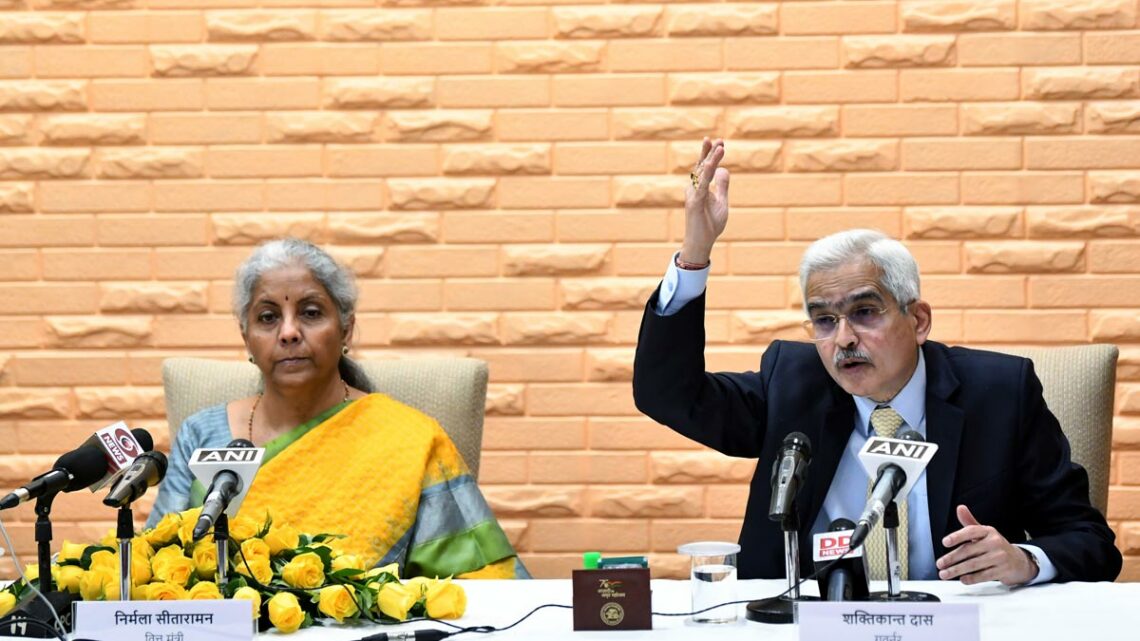
Is It Time For 5 Regional RBIs?
February 7, 2023Despite its admirable competence and proven track record, the RBI doesn’t have the capacity to supervise an economy that’s growing so fast and becoming larger by the year, points out T C A Srinivasa Raghavan.
Here’s a heretical thought: Should India have regional monetary institutions? The answer depends on which central banking model you want to follow: A centralised one like what we have and which is a colonial legacy; or a decentralised one like the one they have in the US.
And that in turn depends on what sort of federation we want to evolve into in this century.
This one is becoming increasingly dysfunctional because too many narrowly focused politicians are chipping away at it.
Or, if you like, just as the maximisation of individual utilities need not, and mostly does not, maximise social utility, if each state in the Indian union seeks to maximise its utility, it can mean disaster for the union as a whole.
Over the last few years I have discussed the idea of a US-type system with civil servants, central bankers, and economists.
They have all told me not to be an ass.
I was told exactly that in 1988, when I proposed in a research paper that India should focus on the export of labour and skill-intensive disembodied services by building satellites.
I have also reminded people that the administration, the legislature, the judiciary, and a host of other institutions have state-level bodies.
All also perform a regulatory role. There is no special reason why this shouldn’t apply to India’s monetary authority, the Reserve Bank of India, as well.
Anyway, the point is this: Despite its admirable competence and proven track record, the RBI is perhaps not working as well as it should and would like to.
The task before it is simply too large. India has become very big on all economic parameters.
Regarding the RBI’s helplessness, the variation in regional inflation rates alone tells its own story.
The all-India inflation number is just too broad to be useful.
Not only does it miss the considerable inter-state variation, it fails to capture things like urban-rural divergence within the same state, or the divergence in inflation for the same product but bought in different parts of the country.
Not to put too fine a point on it, then, the RBI doesn’t have the capacity to supervise an economy that’s growing so fast and becoming larger by the year.
The US, in contrast, has 12 Federal Reserve Banks, whose 24 branches constitute the Federal Reserve System.
Each of these operates within the boundaries of its own designated area that straddles more than one state.
It is argued that the RBI’s regional offices serve the same purpose as the US system.
The RBI with 25 regional offices has more than twice the number of the US Reserve Banks.
But these aren’t independent entities. They are branches with a vertical hierarchy.
Does it matter? Well, either the Americans are wrong or we are. It is up to you to decide.
But if you think they are wrong, you must also be able to say why their monetary and fiscal arrangements work better than ours.
Apart from the usual functions, a key aspect of the work the US state Feds do is represent the region in the Federal Reserve System.
For this they possess a deep understanding of the regional economy — what is called the Beige Book.
We need to ask ourselves if the RBI’s regional offices perform this function as effectively as the regional Feds do in the US.
Indeed, do they even see themselves as representatives of the region?
Or do they regard themselves as the economic equivalent of governors who represent the central government in the states? I rather think they do.
It’s the old ‘you have to keep an eye on the natives’ thing.
So let’s assume for the sake of argument that it is decided by Parliament to reform the central banking authority of India by combining the 25 regional offices of the RBI into, say, five quasi-independent entities — regional RBIs — owned by the biggest banks in the region and, of course, Big Daddy.
All have equal votes. (Note that this is the opposite of the onslaught by the finance ministry during 2006-2013, when it sought to dilute the RBI’s powers by making the ministry supreme).
The only question that matters is whether this will adversely affect the monetary stability of India.
The rest, as they apparently say in the Punjab secretariat, is ‘detail di gal’.
I don’t see how it would do that if the remit of the five regional RBIs is limited to representing their regions rather than representing the central government alone.
Source: Read Full Article


